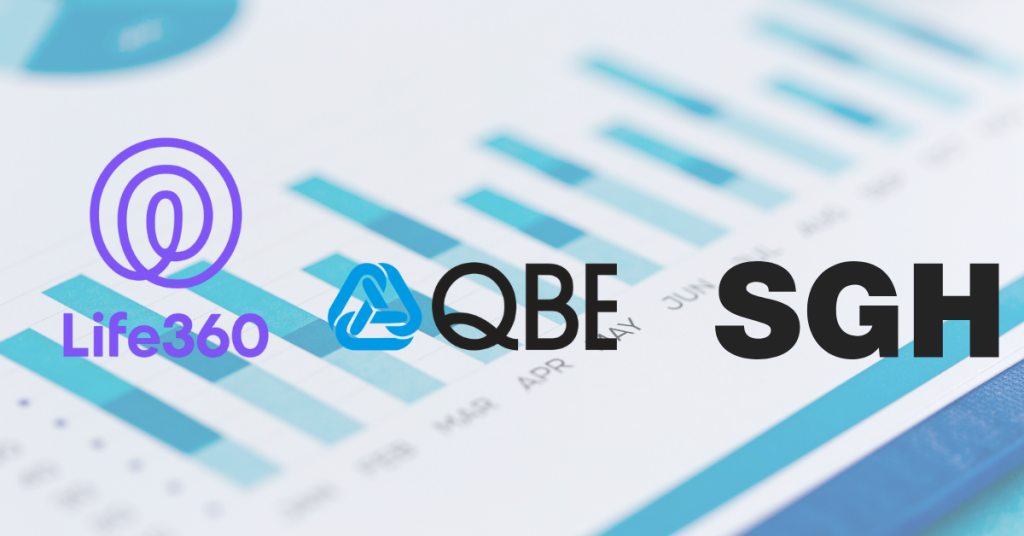Wry & Dry #28 of FY-24. Gender Equality. Nuclear. Spies.

The rest of the world: focused on Gaza, Ukraine and/or the Trumpster’s latest rambling monologue to bovine masses.
The Australian media: transfixed by the results of the most read survey since Publius Sulpicius Quirinius carried out a census in Judea in 6 AD. That survey (not the one by Quirinius) was by the Workplace Gender Equality Agency (WGEA). It’s a shocker.
Wry & Dry #22 FY-24. Emeritus Chairman Dan’s resume. Hamas: making money. GDP per capita falls.

It was feeding time at the media zoo on Wednesday. Hot on the heels of the PISA report showing that 26% of Victorian 15-year-olds’ educational proficiency was too low “to enable them to participate effectively and productively in life,” the long-awaited Ombudsman’s report into the Victorian public service under Emeritus Chairman Dan Andrews was fed to the salivating media mouths.
There was more than enough for indigestion. Victoria’s public service, the Ombudsman’s massive report said, is “ruled at the highest level by a culture of fear.” No subtlety there.
Wry & Dry #21 FY-24. Heaven: a busy week. Dubai: COP that. US: Haley’s comet.

It’s been a busy week at the Members’ Entrance to the pearly gates to heaven.
On Tuesday Charlie Munger arrived in a limmo longer than a bus. Charlie was Warren Buffett’s conservative investment alter ego. He arrived and immediately began arguing with St Peter about heaven’s recent investments (remembering that time doesn’t matter in heaven): “That St Peter’s Basilica property development in Rome was a waste of money.”
Wry & Dry #1, FY-24: Some of it was cricket. Foster country. Headhunters.

It is a truth universally acknowledged that a batsman who is unhappy with the method of his dismissal will cry that it wasn’t “in the spirit of the game.”
And so it came to pass that in a recent cricket Test match, English batsman Bairstow was silly enough to leave his crease when the ball was still in play. He was correctly dismissed (“stumped”).
An outburst of outrage not seen at Lord’s since the Great Pimm’s Shortfall Crisis of 1926 then arose.
Rare Earths, Gold & Reliance Worldwide

This week’s Investment Matters catches up on portfolio news and commentary on recent portfolio movements.
Company profit reporting season continues – CSL Limited, Judo Capital, Seek Limited, BlueScope Steel, Origin Energy

During reporting season, Investment Matters will update clients on all the results for portfolio companies in a simple table that outlines the share price impact of the results, along with short notes on our views of the results.
Reporting Season: Life360, Seven Group Holdings, QBE Insurance Group

Deeper into Profit Reporting Season this week, with several portfolio companies reporting results. We flagged in recent weeks that we expect significant volatility in share prices associated with this year’s results. Twenty years ago, share price changes were more muted, but several issues have arisen that increase the volatility of results in ASX’s two reporting seasons in February and August.
Steady start to reporting season: Beach Energy and Garda Property Group

An uneventful first week of Profit Reporting Season with only Beach Energy bringing forward its results to Monday. We also caught up with the management team of our strong-performing Garda Property Group this week.
In this edition of Investment Matters, we update clients on the Beach Energy and Garda results.
The Calm Before the Storm: What to Expect from the August Reporting Season

The first of August marks the beginning of the financial reporting season for most ASX-listed companies. This period, commonly referred to as “reporting season,” sees companies with a June year-end update the market—usually in August—on recent trading activity and provide interim reports on their financial position for the past six or twelve months. Craig Shepherd outlines what we anticipate will contribute to a particularly volatile reporting season.
In this edition of Investment Matters, we also update clients on three smaller portfolio positions: Imdex, Bapcor, and Viva Energy (recently added to select portfolios based on individual preferences and tax positions).
Familiarising investors with your portfolio’s largest positions

This week we will review First Samuel’s approach to risk management; examine Australian Equity sub-portfolio’s largest holdings, some of the influences behind our stock selection and each stock’s respective share price performance.
Reporting season begins – Macquarie Group and SGH Limited

This week’s Investment Matters will concentrate on two large holdings Macquarie Group and SGH Limited (formerly Seven Group Holdings) and reporting season begins.
Macquarie Group is one of our largest portfolio holdings. Along with Judo Bank, it is our preferred way to gain access to the Australian Banking sector rather than holding prohibitively expensive shares in the four major banks.
Read as Craig Shepherd, CIO, explains long-run returns and outlook for Macquarie Group and SHG Limited.
In addition, we provide comments on the Beach Energy result, one of the first portfolio positions to report updated earnings. In this update, we hope to provide some nuance surrounding the competing factors to emerge.
Our view of Global Equities and Beach Energy result

This month Craig Shepherd, CIO provide our view of Global equities. Our positioning reflects our views on the relative value of different global markets and the outlook for the Australian dollar when its value against the USD is extremely dispersed from long-term averages.
In addition, we provide comments on the Beach Energy result, one of the first portfolio positions to report updated earnings. In this update, we hope to provide some nuance surrounding the competing factors to emerge.
Strong start to the year, EarlyPay, Chinese AI firm DeepSeek

The ASX market is off to a hot start in January 2025 with a range of themes we noted at the end of 2024 being realised. We remain excited about how the market is set up for calendar 2025; for the first time since 2019, we can see large and straightforward sector dispersion.
This week’s Investment Matters will touch on relevant news items related to the portfolio and macroeconomic conditions.
We also touch on news surrounding Chinese AI firm DeepSeek, and its impact on global markets.
GLP drugs, Generative AI and Aurelia metals

© 2025 First Samuel Limited Read the previous week’s Investment matters. Photo © phonlamaiphoto from Via Canva.com With First Samuel’s 2024 CIO Events fast approaching, we were interested to see how the two topics discussed last year, GLP drugs (i.e. weight loss drugs) and Generative AI, had progressed over the past 12 months. The Market GLP […]
We are challenging the markets’ view

© 2025 First Samuel Limited Read the previous week’s Investment matters. Photo © NuTz from Via Canva.com The Market Challenger Group (CGF) This week, we return to discussing our core Australian Shares sub-portfolio and a recent new addition: Challenger Group Limited (CGF). In part, this is a reacquaintance of sorts with a previously well-held position […]
The rotation begins

Firstly, for the past nine months global flows into Australian investments from Chinese investments have contributed to the rising share prices of Australian non-mining large capitalisation companies (especially the banks). This is because global managers wanted to avoid a weakening Chinese economy.
Most obviously, this led to CBA becoming the most expensive bank in the world.Although foreshadowed by others and market reaction earlier in the week, the decision to reduce rates for the first time since Covid-19 will have a significant impact on Australia in due course.
Plus, this week, Craig discusses some interesting new research on Newmont mining and results from Emeco and Catalyst Metals.
What interest rate cuts in the US might mean for Australia

The biggest economic news of the week was not in Australia. In the spirit of the hype associated with interest rate decisions of the GFC and those surrounding Covid 19, commentary by Federal Reserve Chair Jay Powell was once again vital to market sentiment and the future direction of economics around the globe.
Although foreshadowed by others and market reaction earlier in the week, the decision to reduce rates for the first time since Covid-19 will have a significant impact on Australia in due course.
Plus, this week, Craig discusses some interesting new research on Newmont mining and results from Emeco and Catalyst Metals.
Long term trends in global trade – Reporting season concludes – Bega, Johns Lyng and Nanosonics

One of the core thematics that the First Samuel looks to incorporate in client’s Australian shares sub-portfolios is the changing nature of global supply chains. This week Craig explores the patter of global trade and the reason we believe it may continitue to decline.
Plus, read our review the results from Bega, Johns Lyng, and Nanosonics as company profit reporting season concludes.
Profit Reporting Season Concludes – Steadfast, Johns Lyng, Healius/ACL and Bapcore

This week, the Q2 ABS National Accounts data were released on Wednesday. Although a little backward-looking, the National Accounts can provide corroborative evidence of the trends we see from the company reporting season.
In this week’s Investment Matters, we will briefly discuss interesting trends from the reporting season and outline the results for Steadfast Group (SDF), Bapcor Group (BAP), and the new portfolio positions in Healius (HLS) and Australian Clinical Labs (ACL).
Reporting season continues – Worley, Inghams, Earlypay, Ventia and Woolworths

The BlueScope results clearly distinguished between short-term operating conditions and medium-term value creation. Like the Seek result discussed last week, we have been pleased to build a position in this company at a reasonable price when short-term conditions are challenging while the company invests in long-term improvements.
Read this week’s Investment Matters as Craig explains reporting season results from Bluescope, Judo Bank, Reliance Worldwide and Cleanaway.
Reporting season continues – BlueScope, Judo Bank, Reliance Worldwide, Cleanaway

The BlueScope results clearly distinguished between short-term operating conditions and medium-term value creation. Like the Seek result discussed last week, we have been pleased to build a position in this company at a reasonable price when short-term conditions are challenging while the company invests in long-term improvements.
Read this week’s Investment Matters as Craig explains reporting season results from Bluescope, Judo Bank, Reliance Worldwide and Cleanaway.
Reporting season continues – Seek, Seven Group Holdings, Beach Energy and Nufarm

Most companies who have an accounting year-end date in June, select August as the month to report their full year results. We’ll provide updates in Investment Matters over the course of the next few weeks. Here’s a snapshot of results reported in the week just past for stocks held within client portfolios.
A weak US employment report on Friday 2nd August added to the level of uncertainty.
For market participants the principal task was determining whether the level of dislocation was indicative of sharp changes in a relatively narrow set of conditions, or whether concerns were much broader and more permanent.
By the end of the week the outlook was much clearer and markets across the globe recovered much of their losses. This was especially the case in Australia where the markets are now only slightly down a year-to-date basis. More importantly measures of uncertainty such as the US VIX index of volatility had fallen 60 per cent from the highs of Monday.
Quick Return to Stability

Global equity, currency and bond markets experience some gyrations over the past week. Headline movements in Japanese equities, large moves in currencies and sharp falls in equities markets in Australia and the US hinted at significant changes in either positioning or fundamentals.
A weak US employment report on Friday 2nd August added to the level of uncertainty.
For market participants the principal task was determining whether the level of dislocation was indicative of sharp changes in a relatively narrow set of conditions, or whether concerns were much broader and more permanent.
By the end of the week the outlook was much clearer and markets across the globe recovered much of their losses. This was especially the case in Australia where the markets are now only slightly down a year-to-date basis. More importantly measures of uncertainty such as the US VIX index of volatility had fallen 60 per cent from the highs of Monday.
Critical CPI print reduces risks of policy error

this week’s fascinating Investment Matters as Craig explains the trepidations surrounding Wednesday’s release of the estimate for the Q2 Consumer Price Index.
The market responded positively this week to an encouraging reduction in inflation in Australia. The direction and scale of the response can be readily understood – moving from the risk of higher interest rates to the opportunity of lower rates is a positive for Australian companies.
New Financial Year, New Opportunities Part II – Energy sector

Beach Energy, is a leading Australian independent oil and gas exploration and production company. While the energy sector is subject to volatility given underlying commodity prices, Beach Energy’s strategic positioning, future cashflow outlook and growth prospects make it an attractive investment within the sector.
Read this week’s Investment Matters as Craig explains why we think Beach Energy presents a prospective investment opportunity. Many investment banks’ Energy-sector experts see excellent value in Beach Energy at current prices.
Read why we are predominantly interested in owning exposure to movements in the price of gold, both as an insurance policy against global uncertainty or conflict and as a hedge against inflation. Plus, Craig explains why we suspect that the Mining Services and Industrials sector is likely to continue to outperform despite tough conditions.
New Financial Year, New Opportunities – Pathology and Healthcare

Part four of the year-end stocktake will outline our exposure to a final basket of stocks, the gold basket, our mining services exposure, three large industrial companies and two long-held smaller companies.
Read why we are predominantly interested in owning exposure to movements in the price of gold, both as an insurance policy against global uncertainty or conflict and as a hedge against inflation. Plus, Craig explains why we suspect that the Mining Services and Industrials sector is likely to continue to outperform despite tough conditions.
Year-end stocktake part 4: Gold, Mining and Industrial companies

Part four of the year-end stocktake will outline our exposure to a final basket of stocks, the gold basket, our mining services exposure, three large industrial companies and two long-held smaller companies.
Read why we are predominantly interested in owning exposure to movements in the price of gold, both as an insurance policy against global uncertainty or conflict and as a hedge against inflation. Plus, Craig explains why we suspect that the Mining Services and Industrials sector is likely to continue to outperform despite tough conditions.
Year-end stocktake part 3: Non-bank financials and technology

Part Three of the year-end stocktake will outline our exposure to non-bank financial stocks and several technology and medical device companies our clients own.
Discover why we have chosen to invest in areas of the non-bank financial sector, including business banking, global and domestic insurance, invoice financing, and insurance.
Year-end stocktake part 2: Lithium and Domestic economy

This week’s investment sought to highlight the logic and investment fundamentals we are creating in our lithium basket. Once again, the impact of baskets is to increase the number of stocks clients see in their portfolio, from a purely numeric perspective, but not from a thematic perspective.
The stocktake also highlights the economic outlook for our domestic economy exposure by referencing how current conditions mix with the type of management and asset features we are looking for to create an overall exposure.
Understanding Portfolio Diversification: a year-end stocktake

Each week in Investment Matters, we discuss the types of thematics that are crucial in building portfolios. We aim to combine these thematics with thorough bottom-up company research to create a well-diversified portfolio that can outperform in the medium term.
Over the next four weeks, leading into the end of the financial year, we will go towards a more detailed level, looking at individual positions. We will present an update on the portfolio companies, a year-end stocktake.
Company Profit Reporting Season: Peak Week

The ‘peak’ week of company reporting season has just gone by. We provide some of the more relevant company-result takeaways.
Company Profit ‘Reporting Season’

The second substantive week of company reporting season kicked off last week. We provide some of the more relevant company result takeaways.
Company Profit ‘Reporting Season’

The first substantive week of company reporting season kicked off last week. We provide some of the more relevant company result takeaways.
Company Profit ‘Reporting Season’ preview

It’s an intense time of year for equity market professionals. But one that is welcomed because of the opportunity to review financial data, hear about company strategy, assess management and operational performance, and to review one’s own stock selection and analytical prowess.
Lull before company profit reporting season

Late July is when there is a lull in company news, as industrial companies are in communication lockdown before company profit reporting in August. Mining companies are busy releasing production reports and not much else, also ahead of profit reporting.
Out with the old, in with the new

There has been a significant period of de-equitisation in the Australian equity markets in the past couple of years. Our portfolios, and performance, have been the beneficiaries of this phenomenon. Several stocks we own are subject to takeover bids:
Selectivity and Productivity

This week we discuss two major topics. Japan and why we are more heavily invested than global benchmarks and Productivity: why is this a problem for Australia and how does it impact returns?
Going, Going, Gone – the de-equitization of the Australian Equities Market

Two of our investments, Costa Group and United Malt, received confirmation relating to takeover bids this week.
Both takeovers provided support for our investment strategy. This strategy concentrates on finding opportunities where the market fails to price either the long-run asset or the franchise-based value of a company, and instead focuses on short-term earnings fluctuations. In such cases it is often an external party, via a takeover, that unlocks the value.
A deep dive and a frustrating ACCC rejection

This week, we have decided to present a (a) deep-dive on a company we have held for several years and (b) a comment on failed takeover.
Some interesting introductions

We’re always looking for new ideas to introduce into the investment portfolios. A spate of recent takeovers within the portfolio (think Newcrest, Origin, United Malt, Pushpay, Eildon Capital) has accelerated the need for fresh ideas to replenish building cash positions.
The end of globalisation? How your investments will be managed.

The global supply chain landscape has shifted significantly since the COVID-19 pandemic. As trade stagnates, countries are implementing protectionist policies and focusing on local production. Australia, once a beneficiary of global trade, needs to adapt by developing domestic industries, strengthening ties with allies, and investing in local supply chains.
This month, Craig Shepherd explains how trends, such as “friend-shoring,” are driven by technological advancements and a desire for greater control over supply chains.